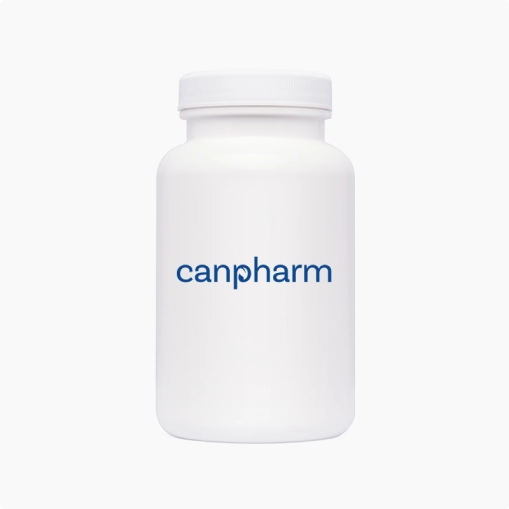
Tabrecta (Capmatinib)
| Dose | Size & Price | Qty |
|---|
-
Description
-
Reviews (0)
-
Related Products
-
Related Conditions
Fact Table
| Fact Table | |
|---|---|
| Chemical Name | Capmatinib |
| License | FDA approved |
| Bioavailability | ~67% (after oral administration) |
| Legal status | Prescription only |
| Elimination half-life | 6.5 hours |
| Dosage (Strength) | 150 mg or 200 mg tablets |
| Pregnancy | Contraindicated; can harm a developing fetus |
| Brands | Tabrecta |
| Protein binding | 96% bound to plasma proteins |
| PubChem CID | 46222153 |
| DrugBank | DB12267 |
| KEGG | D11081 |
| Routes of administration | Oral |
Tabrecta, scientifically known as Capmatinib, is a breakthrough targeted therapy medication designed to combat non-small cell lung cancer (NSCLC) characterized by specific genetic markers. Approved by the FDA, Tabrecta specifically targets and inhibits the activity of the MET exon 14 skipping mutation in cancer cells. This precision medicine approach allows for the direct treatment of tumors with this mutation, promoting better clinical outcomes and offering a new hope for patients with this challenging condition.
Before you buy Tabrecta, it is crucial that you talk to your healthcare provider about potential side effects and Tabrecta cost.
Directions
Tabrecta dosing is prescribed in tablet form and is taken orally. It is crucial that patients follow their healthcare provider's instructions closely when using this medication. The recommended dose of Tabrecta is 400 mg (two 200 mg tablets) taken twice daily.
Ingredients
Active Ingredient: Capmatinib.
Cautions
Patients with a known allergy to Capmatinib or any of the inactive ingredients in Tabrecta should avoid using this medication.
Patients with severe hepatic impairment should use this medication with caution, and frequent monitoring of liver function tests is recommended during treatment.
Tabrecta can cause interstitial lung disease (ILD) or pneumonitis. Patients should report any new or worsening respiratory symptoms immediately.
Tabrecta can harm an unborn baby; effective contraception should be used by females of reproductive potential during treatment and for 1 week after the last dose.
It is not known if Tabrecta passes into breast milk. Breastfeeding is not recommended during treatment with Tabrecta and for 1 week after the final dose.
Interactions
Tabrecta may interact with several other medications, which can alter how it works or increase the risk of serious side effects. Known Interactions include strong CYP3A inhibitors, strong CYP3A inducers and grapefruit or grapefruit juice. Patients should inform their healthcare provider of all medications, supplements, and herbal products they are currently taking before starting treatment with Tabrecta.
Side Effects
Common side effects of Tabrecta include:
- Nausea and vomiting
- Increased blood creatinine
- Peripheral edema
- Fatigue and weakness
- Decreased appetite and weight loss
Frequently Asked Questions about Tabrecta (Capmatinib)
What is Tabrecta used for?
Tabrecta (capmatinib) is a prescription medication used to treat adults with metastatic non-small cell lung cancer (NSCLC) whose tumors have a mutation leading to mesenchymal-epithelial transition (MET) exon 14 skipping. It is specifically designed for patients whose cancer has spread to other parts of the body.
How long does it take for Tabrecta to work?
The time it takes for Tabrecta to work can vary between patients. Some patients may see a response within a few weeks, while others may take longer. Your healthcare provider will monitor your progress and adjust the treatment as needed.
How often do you take Tabrecta?
Tabrecta is usually taken twice daily, with or without food. It is important to follow your healthcare provider's instructions regarding dosage and administration.
What is the success rate of Tabrecta?
The success rate of Tabrecta varies depending on individual patient factors, such as the presence of the MET exon 14 skipping mutation and overall health. Clinical trials have shown that Tabrecta has an objective response rate (ORR) of approximately 41% for patients with this specific mutation.
What is the mechanism of action of Tabrecta?
Tabrecta works by inhibiting the activity of the MET receptor tyrosine kinase, which is involved in the growth and survival of cancer cells. By blocking this pathway, Tabrecta can help slow the growth and spread of cancer cells in patients with the MET exon 14 skipping mutation.
Is Tabrecta chemotherapy?
No, Tabrecta is not considered chemotherapy. It is a targeted therapy, which means it specifically targets certain pathways or proteins involved in the growth and spread of cancer cells.
How effective is Tabrecta?
The effectiveness of Tabrecta can vary among patients. In clinical trials, it has shown a significant response in shrinking tumors in patients with the MET exon 14 skipping mutation. However, individual results can vary, and it is important to discuss your specific case with your healthcare provider.
How do you take Tabrecta?
Tabrecta is taken orally, usually as two tablets taken twice daily. It can be taken with or without food. It is important to take the medication exactly as prescribed by your healthcare provider.
What is the side effect of Tabrecta?
Common side effects of Tabrecta include:
- Nausea
- Vomiting
- Fatigue
- Swelling in the hands or feet (peripheral edema)
- Decreased appetite
- Diarrhea
- Cough
- Shortness of breath
More serious side effects can occur, and you should contact your healthcare provider if you experience symptoms such as liver problems, lung problems, or any signs of infection.
What are the precautions for capmatinib?
- Inform your healthcare provider about any other medical conditions or allergies you have.
- Tell your healthcare provider if you are pregnant, planning to become pregnant, or breastfeeding, as Tabrecta can harm an unborn baby or nursing infant.
- Avoid grapefruit and grapefruit juice while taking Tabrecta, as they can increase the medication's levels in your blood.
- Have regular blood tests as recommended by your healthcare provider to monitor your liver function and other vital parameters.
- Report any new or worsening symptoms to your healthcare provider promptly.
